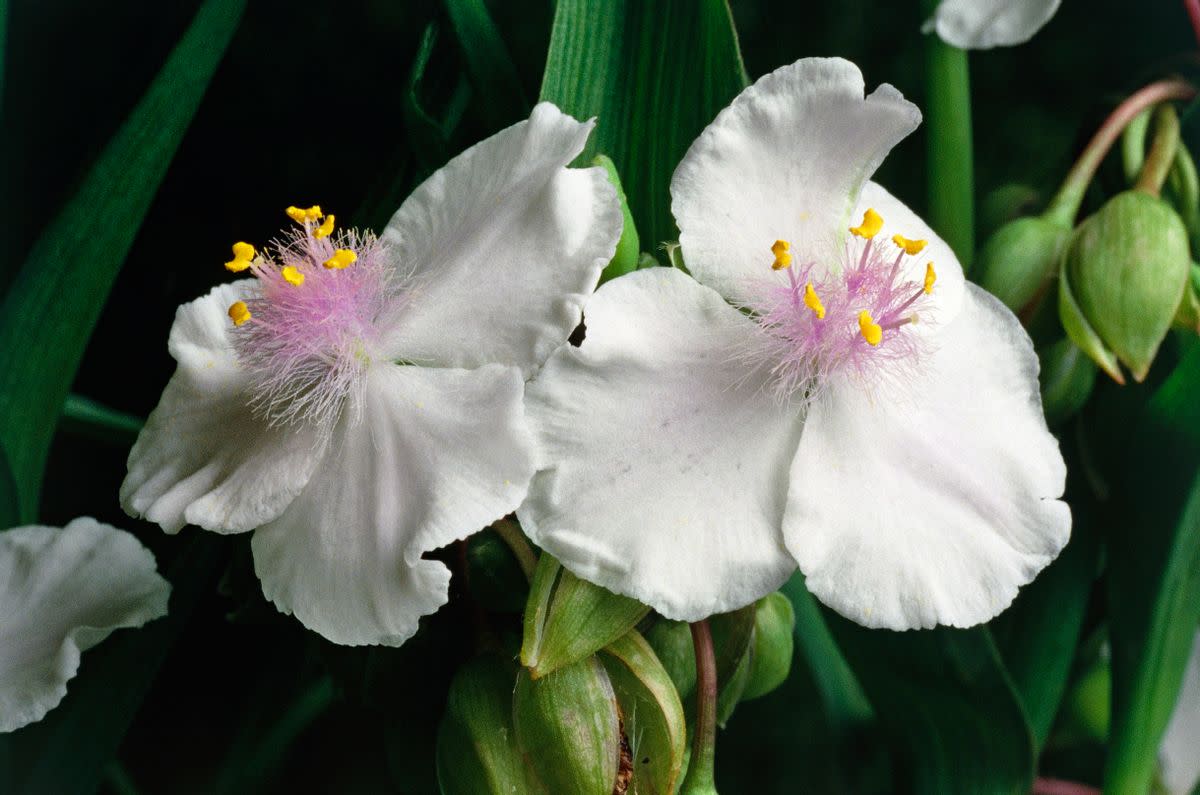Fact Check: Posts Say Self-Sustaining Garden in Sealed Bottle Survived More Than a Half-Century. Here Are the Facts

Claim:
A man created a self-sustaining ecosystem in a sealed bottle that has survived for more than half a century.
Rating:
The story of David Latimer's garden sealed in a bottle has captivated green thumbs around the world, leading to widespread sharing on social media platforms over the years.
A post on Reddit in April 2024 claimed, "In 1960, David Latimer placed a plant in a bottle, and watered it until 1972. Since then, no watering was necessary as the sealed bottle was its own ecosystem," and included a photo of Latimar with the bottle.
In 1960, David Latimer placed a plant in a bottle, and watered it until 1972. Since then, no watering was necessary as the sealed bottle was its own ecosystem.
by u/ExpertAccident in BeAmazed
Additional posts on X (formerly Twitter), Reddit and Facebook have received tens of thousands of likes, shares and comments on posts about Latimer's experiment, amazed by its ingenuity and endurance.
It's true that Latimer created a self-sustaining ecosystem inside a sealed bottle in 1960 that survived for more than half a century.
A post on X from the account @fasc1nate, which has received 15.3 million views at the time of this writing, explained how the "self-running ecosystem" works: "Bacteria in the soil eat the dead plants and turn the plant's oxygen into carbon dioxide for photosynthesis. The bottle is essentially a small model of Earth."

(X user @fasc1nate)
Various news outlets, including The Weather Channel and the Daily Mail, also have covered the garden. Those reports provided additional details about Latimer's experiment, highlighting the simplicity of its setup and the extraordinary longevity of the sealed ecosystem.
Latimer, a retired electrical engineer from Surrey, England, created his bottle garden in 1960.
"At the time the chemical industry had changed to transporting things in plastic bottles so there were a lot of glass ones on the market," Latimer told the Daily Mail in 2013. "Bottle gardens were a bit of a craze and I wanted to see what happened if you bunged the thing up."
The concept was simple: He planted a spiderwort plant (tradescantia) inside a 10-gallon glass carboy and sealed it off from the outside world with a cork. He watered the plant once in 1972, and since then, the ecosystem has been entirely self-sustaining, requiring no further intervention.
The garden's longevity testified to the principles of a closed ecological system. Inside the sealed bottle, the spiderwort plant undergoes photosynthesis — the process by which plants convert light energy into chemical energy to produce food and release oxygen — which sustains its own growth and the survival of microorganisms within the ecosystem. The water cycle is also self-contained, with moisture released by the plant condensing and returning to the soil. This self-sustaining cycle continued for more than 50 years.
"It's 6ft from a window so gets a bit of sunlight. It grows towards the light so it gets turned round every so often so it grows evenly," Latimer told the Daily Mail. "Otherwise, it's the definition of low-maintenance. I've never pruned it, it just seems to have grown to the limits of the bottle."
Latimer's sealed bottle garden has sparked discussions about the potential applications of closed ecological systems in various fields, including space exploration and environmental conservation.
NASA's research has shown that plants not only produce oxygen through photosynthesis but also help regulate carbon dioxide levels with their so-called air-scrubbing qualities, provide fresh food and even purify water, making long-duration space missions more sustainable and self-sufficient.
The Weather Channel's story in 2016 was the last public update on the garden that Snopes could find; its status in 2024 was unclear. The Daily Mail reported that Latimer hoped to leave his bottle garden to his children, and if they didn't want it he planned to donate it to the U.K.'s Royal Horticultural Society.
Snopes has previously written about horticulture, including whether the government could ban vegetable gardens and the most dangerous garden in the world.
Sources:
"Https://Twitter.Com/Allbaym/Status/1779217863317815456." X (Formerly Twitter), https://twitter.com/Allbaym/status/1779217863317815456. Accessed 24 Apr. 2024.
"Https://Twitter.Com/Fasc1nate/Status/1716513075686441434." X (Formerly Twitter), https://twitter.com/fasc1nate/status/1716513075686441434. Accessed 24 Apr. 2024.
In 1960, David Latimer Placed a Plant in a Bottle, and Watered It until 1972. Since Then, No Watering Was Necessary as the Sealed Bottle Was Its Own Ecosystem. : BeAmazed. 11 Aug. 2023, https://web.archive.org/web/20230811223446/https://www.reddit.com/r/BeAmazed/comments/15mm5x5/in_1960_david_latimer_placed_a_plant_in_a_bottle/.
Log in or Sign up to View. https://www.facebook.com/login/. Accessed 24 Apr. 2024.
"Man's Thriving Garden, Sealed in a Bottle, Hasn't Been Watered in Decades." The Weather Channel, https://weather.com/home-garden/news/thriving-garden-bottle. Accessed 24 Apr. 2024.
NASA Plant Research Offers a Breath of Fresh Air | NASA Spinoff. https://spinoff.nasa.gov/Spinoff2019/cg_7.html. Accessed 24 Apr. 2024.
Wilkes, David. "Thriving since 1960, My Garden in a Bottle: Seedling Sealed in Its Own Ecosystem and Watered Just Once in 53 Years." Mail Online, 24 Jan. 2013, https://www.dailymail.co.uk/sciencetech/article-2267504/The-sealed-bottle-garden-thriving-40-years-fresh-air-water.html.


